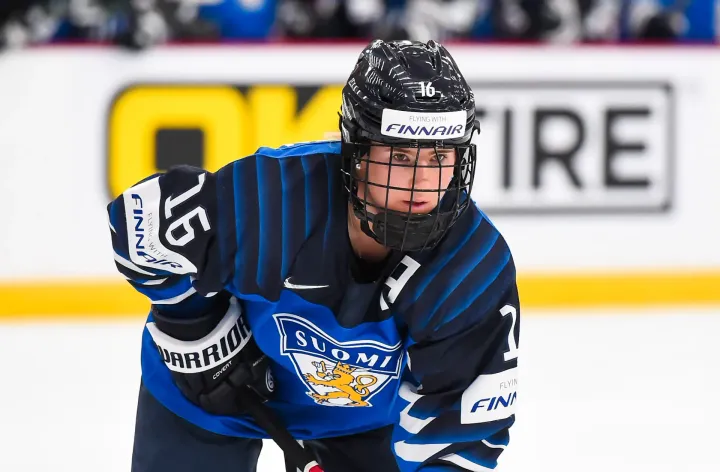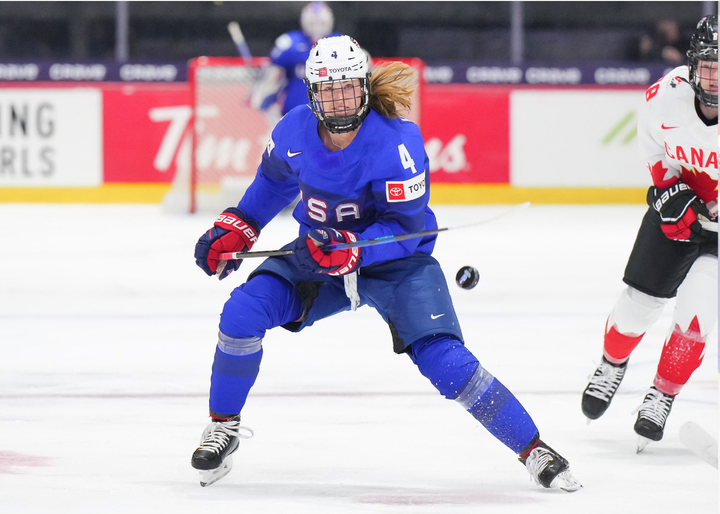A look at CWHL team shot data from the 2017-18 season
Let’s sink our teeth into some CWHL stats
Without true possession numbers in women’s hockey, we often have to rely on more basic tools to measure both individual and team performance. Thankfully for us, the simpler tools are still very useful. The CWHL does not track individual shot totals like the NWHL. It does, however, make team shot data publicly available in box scores. Today at The Ice Garden we are going to take a closer look at the 2017-18 CWHL season with that shot data to illustrate the strengths and weaknesses of each team.
2017-18 CWHL Team Shot Data (All Strengths)
| Team | GF | actGF | GA | actGA | SF/GP | SA/GP | SF60 | SA60 | SF | SA | Sh% | Sv% | PDO |
|---|---|---|---|---|---|---|---|---|---|---|---|---|---|
| LES CANADIENNES MONTREAL | 117 | 113 | 59 | 58 | 36.61 | 22.39 | 35.92 | 21.97 | 1025 | 627 | 0.110 | 0.909 | 101.9 |
| KUNLUN RED STAR | 96 | 95 | 52 | 51 | 35.61 | 27 | 35.2 | 26.69 | 997 | 756 | 0.095 | 0.934 | 102.9 |
| CALGARY INFERNO | 96 | 95 | 70 | 67 | 32.18 | 23.46 | 31.63 | 23.06 | 901 | 657 | 0.105 | 0.900 | 100.5 |
| MARKHAM THUNDER | 81 | 79 | 68 | 65 | 32.57 | 30.64 | 31.88 | 29.99 | 912 | 858 | 0.087 | 0.926 | 101.3 |
| VANKE RAYS | 78 | 74 | 97 | 96 | 29.07 | 34.93 | 28.65 | 34.42 | 814 | 978 | 0.091 | 0.902 | 99.3 |
| TORONTO FURIES | 56 | 55 | 99 | 98 | 25.21 | 33.89 | 25 | 33.61 | 706 | 949 | 0.078 | 0.893 | 97.1 |
| BOSTON BLADES | 41 | 41 | 120 | 117 | 23.25 | 42.18 | 23.04 | 41.81 | 651 | 1181 | 0.063 | 0.907 | 97 |
Glossary
- GF and GA: Goals for and goals against
- actGF and actGA: Goals for and against scored during regulation and overtime
- SF/GP and SA/GP: Shots for per game and shots against per game
- SF60 and SA60: Shots for per 60 minutes and shots against per 60 minutes
- SF: Total shots for
- SA: Total shots against
- Sh%: Team shooting percentage
- Sv%: Team save percentage
- PDO: A team’s shooting percentage combined with its save percentage multiplied by 100; it is also known as the “luck statistic” in hockey/
A few words on PDO and Noora Räty
In NHL analysis, PDO is typically reserved for analysis of 5-on-5 play because it helps us get a clearer picture of team performance without the noise of special teams. However, we are currently unable to get accurate 5-on-5 team shot data in the CWHL and NWHL. As a result, we need to keep in mind that our PDO data is heavily influenced by special teams.
The theory behind PDO is that teams will eventually regress to a value of 100. The logic behind this is that we are looking at team shooting percentages and save percentages, which is why the average PDO of the CWHL’s seven teams last year is 100.
Kunlun’s league-leading 102.9 PDO reveals just how valuable Noora Räty was to her team. Per @CreaseGiants’ goaltending numbers, Räty started in 20 of Kunlun’s 28 games last season. Her .944 save percentage gave Kunlun an unrivaled team save percentage. The Red Stars also had a better team shooting percentage than the league average, and they finished the season with the second-best power play in the league — but we can still safely say that Räty was the key to Kunlun’s success last year. The reigning CWHL Goaltender of the Year gave her team every chance to win games — and Kunlun’s offense, spearheaded by Kelli Stack, more often than not got the job done.
Shooting percentages and special teams
When we consider CWHL team shooting percentages and success rates on special teams it becomes clear just how dependent Boston was on its power play. The Blades had the worst shooting percentage in the league and the lowest SF60. However, Boston’s 17 percent success rate on the power play was the third best in the CWHL. When the power play didn’t deliver, the Blades had little chance of winning games — 43.9 percent of Boston’s goals came on the power play.
Another conclusion we can draw from team shooting percentages and special team success rates is Calgary’s ability to produce at even strength. The Inferno had the second-best shooting percentage in the league, but their power play was actually below the league average. This suggests that Calgary was significantly less dependent on the power play to generate scoring chances than Kunlun was. Both teams finished the season with a 3.39 GF/GP.
One possible reason behind Calgary’s mediocre power play is that it might have been somewhat one-dimensional. Brittany Esposito scored 38.89 percent of the Inferno’s power play goals. No other CWHL power play relied more on the finishing ability of a shooter like Calgary relied on Esposito and her seven power play goals.
Unfortunately, we know that the league had issues tracking special teams events in 2017-18, so all of this data comes with a pretty big asterisk stapled to it.
Adding context
Generally, the more context we provide when discussing statistics the better. As much as we may want to, we can’t boil down a team’s performance to a single number. For example, there is a huge difference between a 1-0 game where the winning team was outtreashot 35 to 18 and a 4-3 game where the winning team scored three power play goals without surrendering one of their own.
Now, let’s apply some context to some of the data we have from the 2017-18 CWHL season.
Unsurprisingly, the Boston Blades had the lowest SF60 and SA60 in the league. It’s also unsurprising to see that the Blades had far more success in the shot differential department against the Toronto Furies than they did against the other five CWHL teams. Boston averaged 31 shots per game against Toronto and 21.96 shots per game against the rest of the league.
The Markham Thunder, the 2018 Clarkson Cup Champions, finished the regular season as a distant third in SF60, behind Montréal and Kunlun. However, Markham had the most success generating shots on goal against Montréal, the CWHL leader in SA/GP. As noteworthy as that may be, we can learn even more by providing context and digging deeper into the numbers.
The season series between the Thunder and Les Canadiennes provides us with a great example for why SF60 and SA60 are more valuable tools than SF/GP and SA/GP. All five of the meetings between Markham and Montréal last season required overtime. Markham’s SF60 against Les Canadiennes was 26.67 and their SF/GP against Les Canadiennes was 28.2. For some more context, Kunlun led the other five CWHL teams with a 24.59 SF60 against Montréal. So, while Markham had more success generating shots against Montréal than the rest of the league, they didn’t have as much success as SF/GP alone might suggest.
Data (tediously) scraped from CWHL box scores by Mike Murphy.





Comments ()